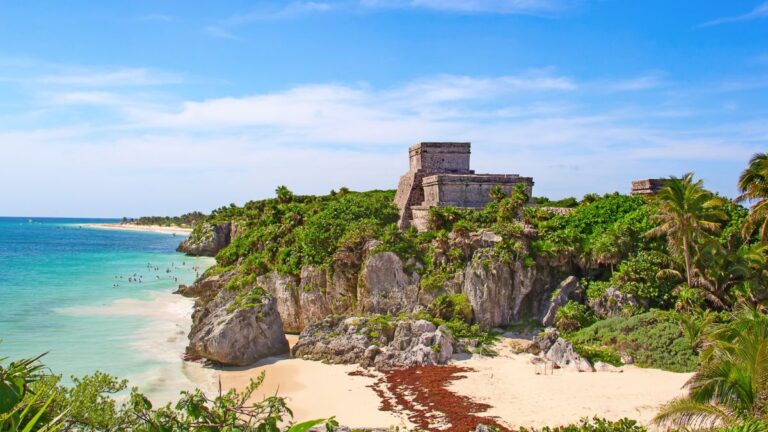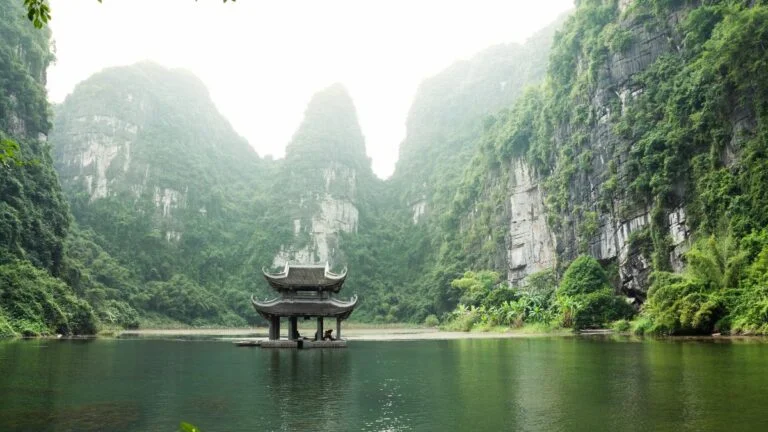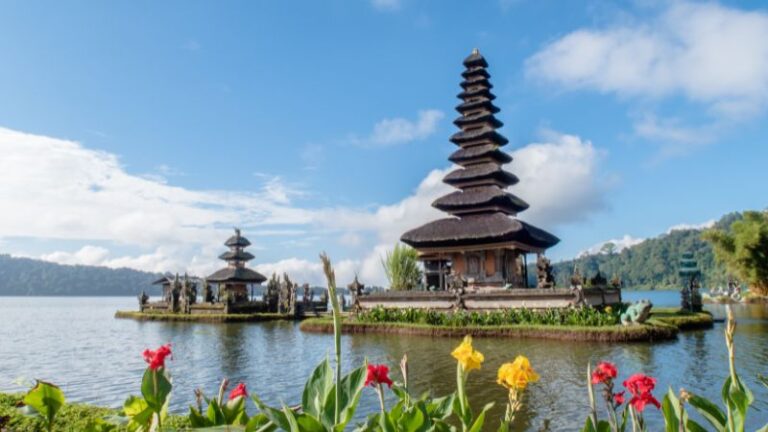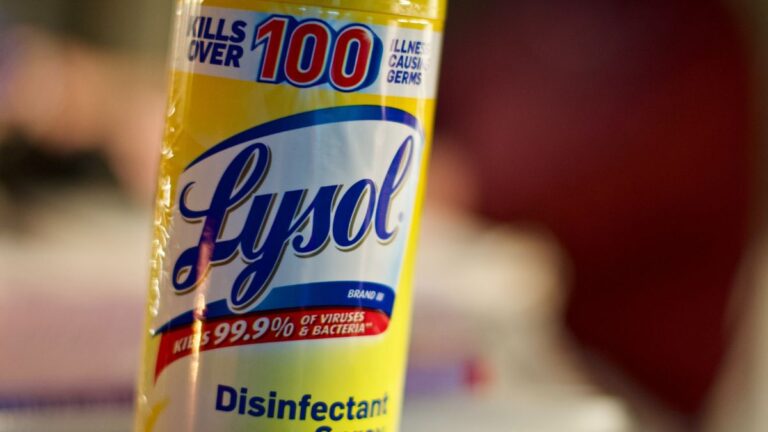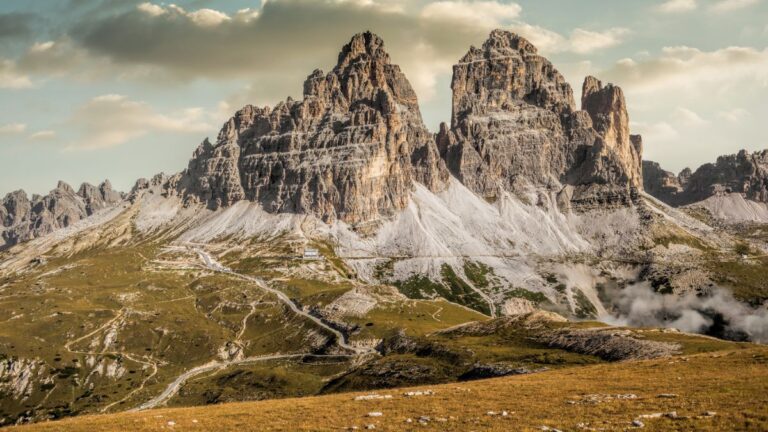What is the Cheapest Hawaiian Island to Visit? (& The Most Expensive One)
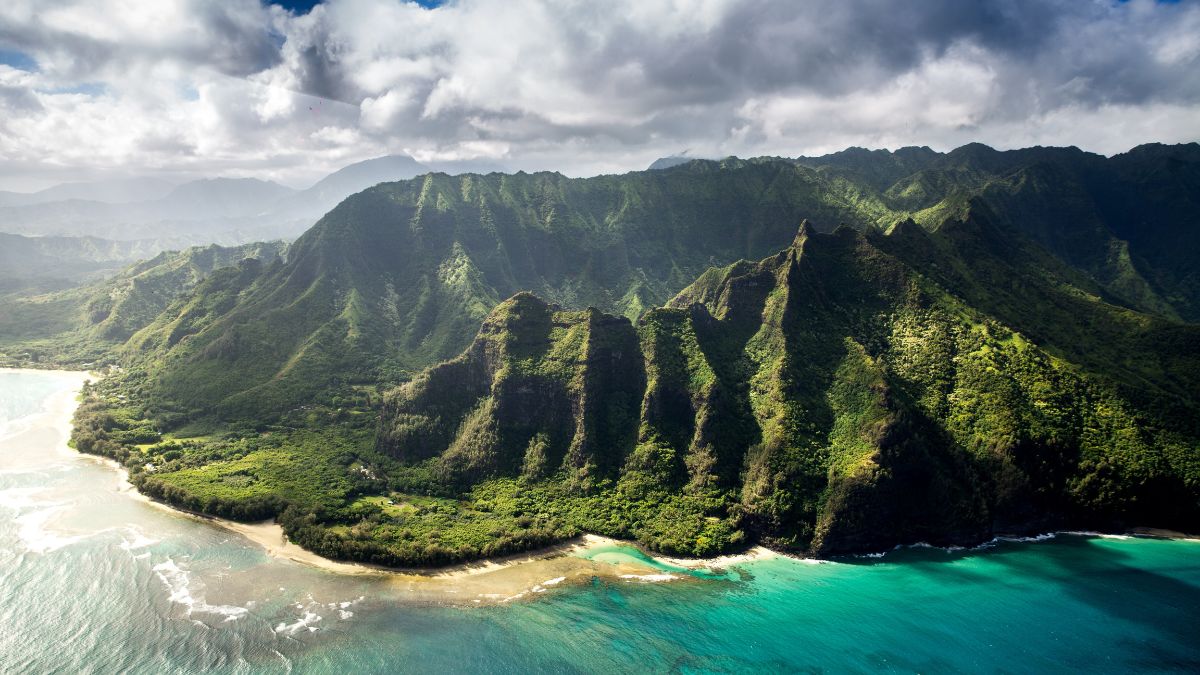
As participants in Amazon Associates and other programs, we earn from qualifying purchases. This comes at no additional cost to you. For more details, see our Affiliate Disclosure.
If the heavenly islands of Hawaii have been calling your name, but you’re struggling to decide which one to visit due to budget constraints, you’ve landed at the right place. Welcome to an exploratory journey through the paradise of the Pacific, where we’ll not only unravel the cheapest Hawaiian island that offers an unforgettable experience without breaking the bank but also unveil the most expensive one, exhibiting the sheer opulence and luxury that the Hawaiian archipelago holds.
From vibrant beaches to volcanic landscapes, from tropical jungles to crystal clear waters brimming with marine life, each island in Hawaii has its unique allure. But the key is knowing which one aligns best with your budget and travel expectations.
Understanding the Basics: What Makes a Hawaiian Vacation Expensive?
Tourism in Hawaii is a major industry, with millions of people flocking to the islands each year to soak in the sun and immerse themselves in the rich culture and natural beauty. However, planning a Hawaiian vacation can be quite an investment, and understanding what contributes to the expense can help you better plan your budget. There are several factors to consider:
- Geographical Isolation: Being located in the middle of the Pacific Ocean, everything in Hawaii – from the daily commodities to the most luxurious goods – is either flown in or shipped, which significantly adds to the overall costs. This isolation factor directly impacts the price of goods and services on the islands.
- Accommodation: The cost of lodging can vary greatly depending on which island you choose, the location of the hotel or rental, and the time of year. Hawaii’s peak tourism seasons (typically mid-December through March and June through August) can drive up prices considerably.
- Food: Dining in Hawaii can be another significant expense. Many upscale resorts and restaurants offer fine dining options that can be pricey. Plus, as mentioned earlier, the cost of shipping food to the islands can inflate grocery prices.
- Transportation: Inter-island flights, rental cars, taxis, and public transportation can also add up. Rental car prices, in particular, have seen a sharp increase in recent years.
- Activities: The unique attractions and activities that Hawaii offers – from snorkeling and surfing lessons to helicopter tours and luaus – while truly unforgettable, can also add a substantial amount to your budget.
Each of these elements plays a role in the overall cost of a Hawaiian vacation. In the following sections, we’ll explore which islands offer the best value and how to get the most out of your Hawaiian adventure, regardless of your budget.
An Overview of the Hawaiian Islands: Which One Fits Your Budget?
Hawaii is an archipelago composed of numerous islands, eight of which are considered major. These include Hawaii (often referred to as the Big Island), Maui, Oahu, Kauai, Molokai, Lanai, Niihau, and Kahoolawe. Each island possesses its own unique charm, culture, and cost of visit. Let’s take a high-level overview of each:
1. Hawaii (Big Island): Known for its diverse climate zones, the Big Island offers everything from black sand beaches to snow-capped mountains. As it is larger and less densely populated than some of the other islands, it can be a more affordable option, particularly when it comes to accommodations and dining options.
2. Maui: Famous for its stunning beaches and the scenic Road to Hana, Maui tends to be more expensive than the Big Island, but less than Oahu, particularly for accommodations. It strikes a balance between developed tourist infrastructure and preserved natural beauty.
3. Oahu: Home to the state capital, Honolulu, and the world-renowned Waikiki Beach, Oahu tends to be one of the more expensive islands, particularly in these heavily-touristed areas. However, staying outside of these hotspots can make Oahu more affordable.
4. Kauai: Known as the “Garden Isle” for its lush landscapes and stunning natural beauty, Kauai is a dream for nature and outdoor enthusiasts. While it can be slightly less expensive than Oahu and Maui, the cost is comparable.
5. Molokai: Often considered the most traditionally Hawaiian island, Molokai is less tourist-driven than its counterparts, making it potentially a more affordable option for those seeking a quiet, authentic experience.
6. Lanai: Once a private island, Lanai is now home to luxury resorts, making it one of the more expensive Hawaiian destinations.
7. Niihau & Kahoolawe: These islands are generally off-limits to visitors. Niihau is privately owned and only accessible by invitation, while Kahoolawe, a former bombing range, is uninhabited and access is restricted.
As you can see, the Hawaiian Islands offer something for every budget. In the upcoming sections, we’ll dive deeper into the specifics of the cheapest and most expensive Hawaiian islands to visit.
Exploring the Cheapest Hawaiian Island: Unmatched Beauty at Unbeatable Prices
For those seeking an unforgettable Hawaiian experience without a hefty price tag, look no further than the Big Island, officially known as Hawaii. This diverse and expansive island offers a wide array of affordable options for accommodation, dining, and activities that combine to make it the most budget-friendly option among its sister islands.
- Accommodation: The Big Island boasts a range of budget-friendly accommodations. From affordable hotels in Hilo and Kona to budget vacation rentals scattered across the island, there are options to suit every traveler’s needs. Camping is also a popular and economical choice, with numerous beautiful and well-equipped campgrounds available.
- Food: Dining on the Big Island can be as affordable as you make it. Local markets, food trucks, and small “hole in the wall” restaurants offer delicious meals at reasonable prices. You can also save money by preparing your own meals if you choose a vacation rental with a kitchen.
- Activities: One of the key reasons the Big Island is the cheapest Hawaiian island to visit is the wealth of free or inexpensive activities. Stunning beaches, hiking trails through lush rainforests, lava tube exploration, and stargazing atop Mauna Kea are just a few examples of what the island has to offer. While there are certainly paid activities, such as guided tours and boat trips, there are plenty of ways to explore and enjoy the island without spending much.
- Transportation: While rental car prices have generally been on the rise, the Big Island still typically has more affordable rates compared to islands like Maui and Oahu. Alternatively, the island’s public bus service, Hele-On, offers another economical way to get around.
The Big Island truly embodies the saying “the best things in life are free (or nearly free).” It offers an affordable gateway to the paradisiacal charm of Hawaii without compromising the richness of the experience. Now let’s turn our attention to the other end of the spectrum: the most expensive Hawaiian island to visit.
A Deep Dive into the Cost Factors: Accommodation, Food, and Activities
As you map out your Hawaiian vacation, the primary cost components you’ll need to account for are accommodation, food, and activities. While the total cost can vary widely based on the choices you make, understanding what to expect can help you budget effectively.
Accommodation
Hawaii’s accommodation options are diverse, ranging from luxury resorts and villas to budget hotels and vacation rentals.
- Luxury Accommodations: Resorts in areas like Waikiki (Oahu) and Kaanapali (Maui) or the exclusive resorts on Lanai can range from $500 to over $1000 per night, depending on the season.
- Mid-range Accommodations: Mid-range hotels and vacation rentals, typically found on all the islands, can vary from $200 to $500 per night.
- Budget Accommodations: More budget-friendly options, including smaller hotels, bed and breakfasts, and hostels, can be found for under $200 per night, particularly on the Big Island and parts of Maui and Kauai.
Food
Eating in Hawaii can range from inexpensive to very pricey, depending on where and what you choose to eat.
- Dining Out: On average, expect to pay anywhere from $10 to $15 for a casual breakfast or lunch and upwards of $20 to $50 for a dinner at a mid-range restaurant per person. Fine dining establishments, particularly those located in resorts, can easily cost over $100 per person.
- Groceries: Shopping for groceries to cook your own meals can save money but expect to pay slightly more than mainland prices due to the cost of importing food to the islands.
Activities
The cost of activities in Hawaii can also vary significantly.
- Free Activities: Many of Hawaii’s greatest attractions, like its beaches, hiking trails, and some historic sites, are free of charge.
- Paid Activities: However, some attractions and activities come with fees. Guided tours, like those of the Volcanoes National Park on the Big Island, can range from $100 to $200 per person. Luaus typically cost between $100 to $150 per person. Water activities like snorkeling, surfing lessons, or scuba diving usually cost between $50 to $100 per person, while more exclusive experiences like helicopter tours can range from $200 to $350 per person.
Understanding these cost factors and planning accordingly can help you maximize your Hawaiian experience, irrespective of your budget. In the next section, we’ll delve into the most luxurious and expensive Hawaiian island to visit.
The Most Expensive Hawaiian Island: A Glimpse into Hawaiian Luxury
When it comes to sheer luxury and opulence, Lanai stands out among the Hawaiian Islands. Once a pineapple plantation, Lanai was bought by Oracle CEO Larry Ellison in 2012 and has since been transformed into an exclusive luxury destination.
- Accommodation: Lanai is home to two Four Seasons Resorts. The Four Seasons Resort Lanai, located on a white-sand beach, offers an ultra-luxurious retreat with rooms starting around $1,000 per night. The Lodge at Koele, a Four Seasons Resort, is a highland haven offering an entirely different atmosphere with its country manor style and upcountry location. The room rates at these resorts are significantly higher than most other accommodations in Hawaii, but they provide a world-class experience.
- Food: The dining experience on Lanai is similarly exquisite. Both resorts offer a selection of restaurants serving everything from poolside casual fare to gourmet cuisine prepared by world-renowned chefs. While the cost of dining can vary, expect to pay a premium for the quality and atmosphere these establishments provide. For more budget-conscious travelers, Lanai City also offers a handful of more affordable, yet charming dining options.
- Activities: The island of Lanai offers exclusive activities such as golfing on a championship course overlooking the ocean, off-roading in a 4×4, exploring the island by horseback, or indulging in high-end shopping. Boat tours, snorkeling, and scuba diving excursions are also available. While these activities come at a price, they offer unique experiences that can make a trip to Lanai truly memorable.
- Transportation: Getting to Lanai is primarily achieved by a short ferry ride from Maui or a small plane flight from Honolulu, which adds an additional cost to consider.
Despite the high costs, a trip to Lanai offers an unparalleled luxurious experience, making it a worthwhile consideration for those willing to splurge on their Hawaiian vacation. For our next section, let’s compare the costs across all the major islands to gain a holistic understanding of budgeting for your Hawaiian adventure.
Cost Comparison: Breaking Down the Expenses
To help plan your Hawaiian vacation, it’s important to understand the cost variations across the islands. Here’s a simplified comparison of the average costs per day for a single person visiting the four most popular islands: Big Island (Hawaii), Maui, Oahu, and Lanai.
Accommodation
- Big Island: Budget hotels or vacation rentals can be found for around $100-$150 per night.
- Maui: Accommodations can range widely, but expect to spend around $200-$300 per night for a mid-range hotel or rental.
- Oahu: Prices in Honolulu and Waikiki can be high, with an average of $250-$350 per night for a mid-range hotel.
- Lanai: Luxury is the norm, with nightly rates at the resorts typically starting at $1,000.
Food
- Big Island: Expect to spend around $30-$50 per day on food if eating at modest establishments or cooking your own meals.
- Maui and Oahu: A budget of around $50-$70 per day is more realistic for these islands, although it can be less if you prepare your own meals.
- Lanai: Dining at the luxury resorts can easily cost over $100 per day.
Activities
- Big Island: Many activities are free or inexpensive, but if you opt for some paid activities, budget around $50-$100 per day.
- Maui and Oahu: A budget of $75-$125 per day will cover most activities, including beach rentals, tours, and entrance fees.
- Lanai: High-end activities can run upwards of $150 per day.
Transportation
- Big Island, Maui, and Oahu: Car rentals can range from $40-$80 per day, depending on the type of car and booking period.
- Lanai: There’s a limited need for car rental due to the island’s small size and resort-provided transportation, but getting there by ferry or flight will add to your costs.
While these are estimated averages, remember that costs can vary widely depending on personal preferences, the time of year, and how far in advance you book. These estimates should give you a rough idea of how much you might expect to spend per day on each island. In the next section, we will share some tips to help you save money on your Hawaiian vacation.
Budget Tips: How to Save Money on Your Hawaiian Vacation
Despite Hawaii’s reputation as a pricey destination, there are numerous ways to save money on your vacation. Here are some tips to help stretch your budget while still enjoying a fulfilling Hawaiian experience.
1. Choose Your Travel Dates Wisely: Hawaii’s peak tourist seasons coincide with major holidays and the summer. Consider traveling during the off-peak season (spring and fall) for lower airfares and accommodation rates.
2. Plan Your Accommodations: Choosing a vacation rental with a kitchen can save significantly on meal costs. Also, consider staying just outside major tourist areas for better rates.
3. Cook Your Own Meals: While trying local cuisine is part of the travel experience, consider cooking some meals, especially breakfast and lunch, to save money. Local farmers’ markets offer fresh and affordable produce.
4. Rent a Car: Public transportation can be limited on some islands, and taxis can add up. Renting a car could be more economical, especially when traveling with a group.
5. Leverage Free Activities: Beaches, hiking trails, and certain cultural sites are free. Plan a good portion of your activities around these cost-free options.
6. Use City Discount Cards: Cities like Honolulu offer discount cards for multiple attractions, which can save you money if you plan on visiting several paid attractions.
7. Book Tours and Activities in Advance: Many tour operators offer discounts for bookings made well in advance. Be sure to check their websites or call directly.
8. Pack Wisely: Items like sunscreen and beach accessories can be expensive in Hawaii. Bring what you can from home to save.
9. Look for Flight Deals: Sign up for airfare alerts or use flight comparison websites to find the best deals on flights to Hawaii.
With these tips, you can enjoy the magic of Hawaii without straining your wallet. In the next section, we’ll take a closer look at the invaluable experiences that make a Hawaiian vacation truly priceless.
Island Life Beyond the Cost: The True Value of a Hawaiian Experience
While the financial aspect of a Hawaiian vacation is undeniably important, it’s only one part of the equation. The true value of a Hawaiian experience lies far beyond dollar signs, reaching into the realm of priceless experiences, unforgettable memories, and invaluable learning opportunities.
1. Unparalleled Natural Beauty: The lush rainforests, pristine beaches, majestic mountains, and vibrant coral reefs of Hawaii offer a natural spectacle that’s truly unmatched. The simple pleasure of soaking in these breathtaking landscapes can be the highlight of your trip.
2. Unique Cultural Experiences: Hawaii’s rich culture and history offer endless opportunities for immersive learning. From traditional hula performances and luau feasts to historical sites and museums, there are numerous ways to engage with Hawaii’s indigenous culture and colonial history.
3. Adventure Activities: Whether you’re a thrill-seeker or prefer more relaxed pursuits, Hawaii offers an array of activities. Surfing, snorkeling, hiking, volcano exploring, whale watching – the possibilities for adventure are vast and varied.
4. Relaxation and Wellness: Beyond the thrill and excitement, Hawaii is also a haven for relaxation and wellness. Luxurious spas, yoga retreats, or just a day spent lounging on a tranquil beach – the islands offer countless ways to rejuvenate your mind, body, and soul.
5. Wildlife Encounters: From snorkeling with sea turtles to watching humpback whales breach the ocean’s surface, Hawaii offers unique opportunities for up-close wildlife encounters.
6. Warm Aloha Spirit: Perhaps the most invaluable aspect of a Hawaiian vacation is the chance to experience the Aloha Spirit. This unique philosophy of warmth, friendliness, and sincerity deeply ingrained in Hawaiian culture makes every interaction on the islands a joy.
In conclusion, while the cost of a Hawaiian vacation is a necessary consideration, the true value lies in the experiences that will remain etched in your memory long after you leave the islands. The breathtaking beauty, cultural richness, and spirit of Aloha that Hawaii offers make every penny spent a worthwhile investment.

